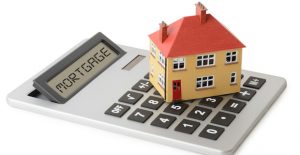Second Mortgages – What are they?

 If you’re a Homeowner, you’ve probably heard about second mortgages. But what is a second mortgage?
If you’re a Homeowner, you’ve probably heard about second mortgages. But what is a second mortgage?
It’s a type of loan that is secured by your home, similar to a first mortgage provided by a traditional bank. Over time you build up equity in your house, and a second mortgage allows you to use the equity you’ve built up. It is an additional loan taken out on a property that is already mortgaged.
A second mortgage can be a great way for homeowners to consolidate debt. Though second mortgages often carry higher interest rates than first mortgages, these rates are still often lower than high interest credit cards, car lease payments or unsecured lines of credit.
If you use a second mortgage to consolidate debt and help you meet other financial commitments on time, this can improve you credit score and allow you to qualify for a mortgage with a prime lender sooner.
Second Mortgage Products & Features
A HELOC, or home equity line of credit, is a type of second mortgage, as you’re basically adding a second loan on top of your existing loan in order to access equity. HELOC’s are typically only offered to those in urban areas who have a strong credit profile.
If you are experiencing credit challenges or limited income, private mortgages are likely your only option. Private mortgages have less qualification requirements, and usually carry a higher interest rate than HELOC`s.
For many second mortgage products, you can elect to only make payments on the interest. This creates lower monthly payments, and allows you to have affordable access to the equity in your home before you are ready to sell.
They are also typically written for a short term, IE, 1-year or possibly 2-years` terms. They are renewable at the option of the lender at maturity, just as Institutional mortgages are.
Related Article – Home Equity Loans
Risks to Each Party
For the lender, registering a second mortgage is more risky than the first mortgage, because they are in second position on your property’s title.
If the homeowner defaulted on their payments and the property was taken into possession, the lender in first position would always be paid out first, whereas the lender in second position runs a higher risk of not being paid out in full. To compensate for this additional risk, mortgage rates for second mortgages are typically higher than for principal mortgages.
When a Homeowner takes out a second mortgage, you are using your home as collateral to the lender. This means that if you do not pay, the bank has the option to foreclose just as it does with a first mortgage.
In order to qualify for a second mortgage in second position, lenders will look at four areas:

- Property. Because other factors are risky (i.e. your credit score), lenders need to secure their investment in case you are unable to keep up with mortgage payments.
- Equity. The more equity you have available, the higher your chances of qualifying for a second mortgage will be.
- Income. Lenders want to verify that you have a dependable source of income, to ensure that you can make payments.
- Credit score. The higher your credit score, the lower your interest rates.
Related Article – What is a 2nd Mortgage?
Contact me today if you have questions, or, you can apply online by clicking here.



